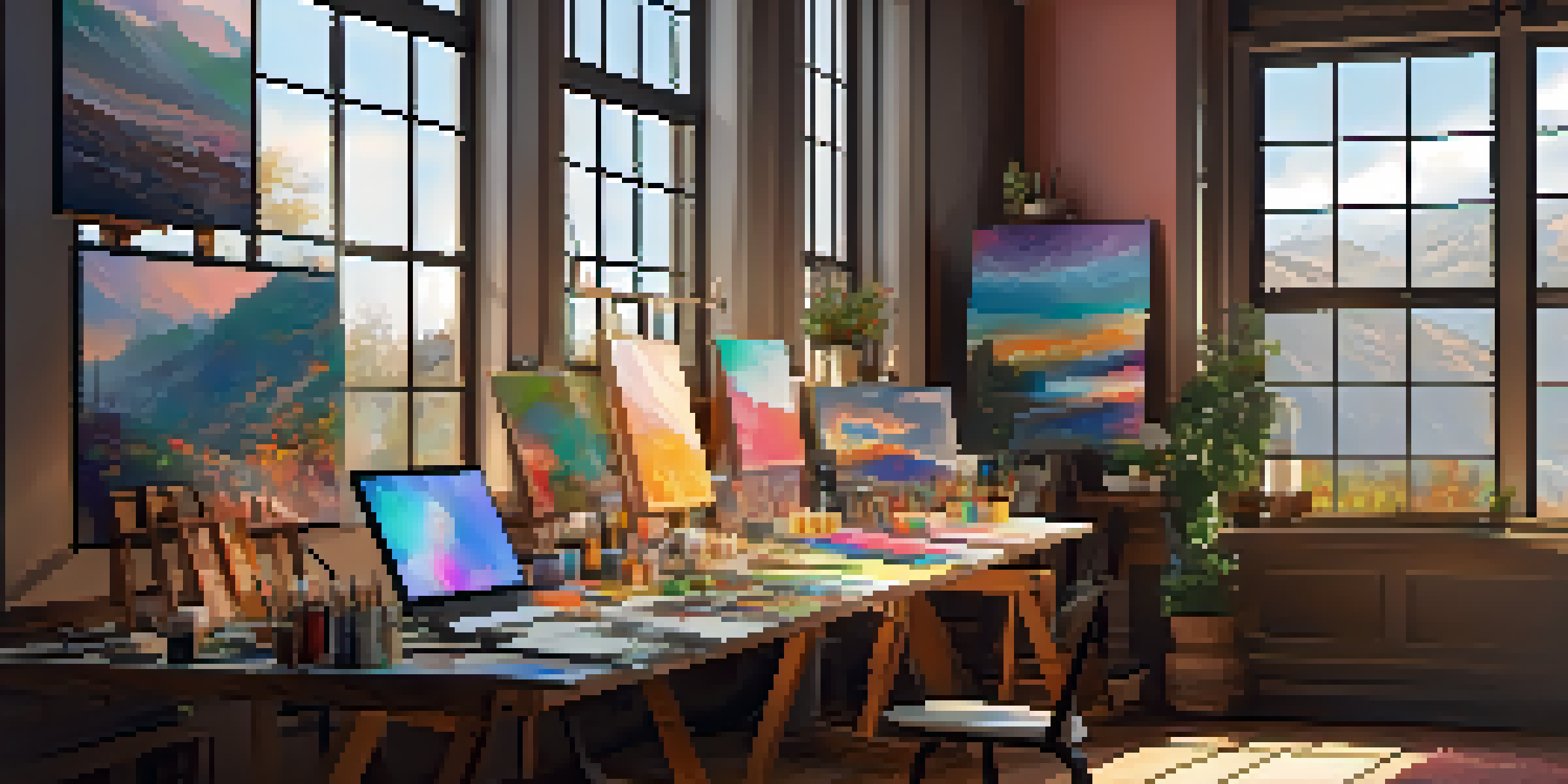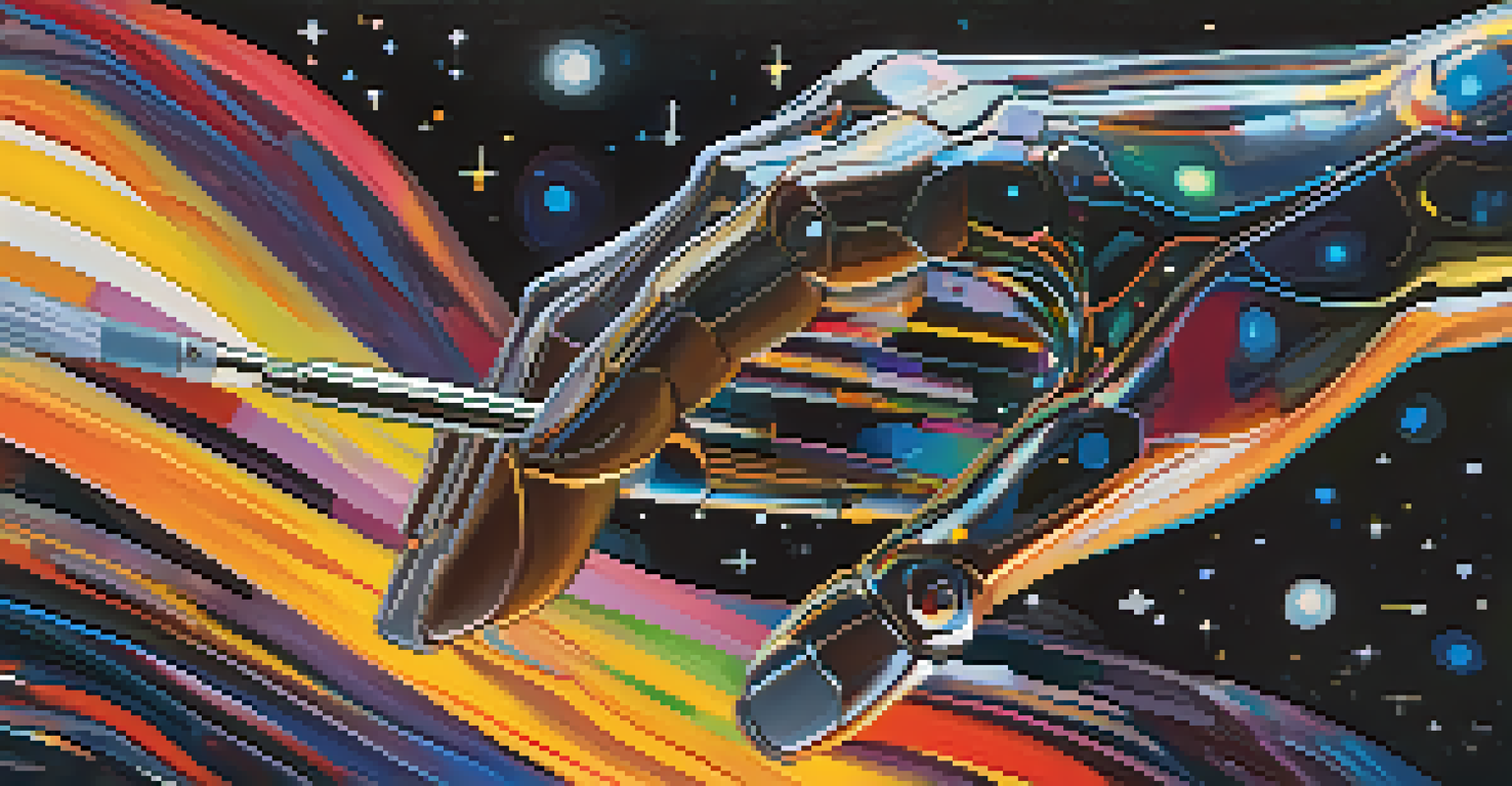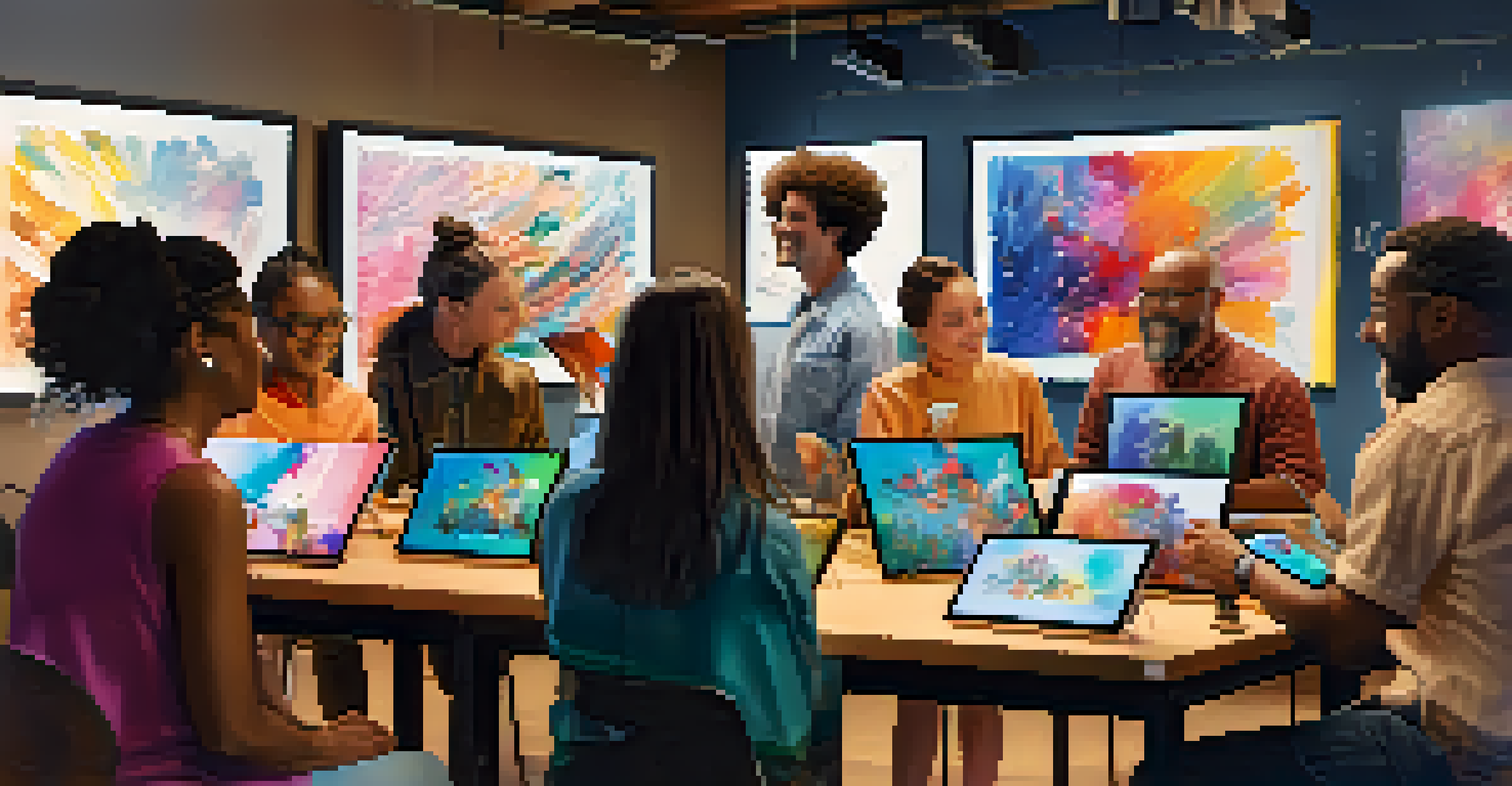The Integration of AI in Digital Arts: Opportunities Ahead

Understanding AI's Impact on Digital Arts
Artificial Intelligence (AI) is revolutionizing various fields, and digital arts are no exception. By automating repetitive tasks and providing advanced tools, AI is enabling artists to push the boundaries of their creativity. Imagine having a virtual assistant that can suggest color palettes or generate unique patterns based on your style.
The great thing about AI is that it’s not about replacing people; it’s about augmenting their capabilities and helping them achieve their full potential.
This integration allows artists to focus more on conceptualizing their work rather than getting bogged down by technical details. For example, AI algorithms can analyze thousands of artworks to identify trends, providing insights that can inspire new creations. The result? A more efficient creative process that blends human emotion with machine precision.
However, this doesn't mean that AI is replacing artists. Instead, it acts as a collaborator, enhancing their abilities and offering new ways to express themselves. As we explore further, we’ll see how this partnership is reshaping the landscape of digital arts.
AI Tools Empowering Digital Artists
Several AI-powered tools are making waves in the digital art community. Programs like DALL-E and Midjourney allow artists to generate images from text prompts, giving them an entirely new medium to explore. Picture being able to visualize concepts instantly—it's like having a sketchbook that can create anything you describe!

These tools not only expedite the creative process but also inspire artists by presenting them with unexpected results. By using AI, artists can discover new styles and techniques that they may not have considered before. This element of surprise can lead to groundbreaking artwork that challenges traditional forms.
AI as an Artist's Collaborator
AI enhances artists' creativity by automating repetitive tasks and providing new tools for exploration.
Moreover, as these AI tools continue to evolve, they offer more customization options, allowing artists to fine-tune outputs to match their vision. This adaptability means that every artist, regardless of their skill level, can experiment and innovate.
Redefining Creativity with AI Collaborations
The concept of creativity is being redefined as AI becomes a co-creator in the artistic process. Artists can now collaborate with AI to explore themes and concepts that resonate deeply, blending human intuition with algorithmic analysis. This synergy can lead to art that feels both familiar and refreshingly new.
Art is not a thing; it is a way. It is not a means of expression, but a way of being. It’s a conversation between the human spirit and the infinite possibilities of creativity.
For instance, some artists utilize AI to generate music, combining it with visual elements to create immersive experiences. By merging different art forms, they can engage audiences on multiple sensory levels, transforming the way we appreciate art. Think of it as a multi-layered storytelling experience where AI plays a pivotal role.
As artists and AI continue to work together, we can expect to see innovative projects that challenge our understanding of authorship and originality. This collaboration opens doors to new genres and movements that are yet to be discovered.
Challenges of Integrating AI in Digital Arts
While the integration of AI in digital arts brings numerous opportunities, it also presents challenges that must be navigated. One major concern is the question of originality. As AI generates artwork based on existing data, it raises ethical dilemmas about ownership and creativity.
Artists often worry about their unique voices being overshadowed by AI's capabilities. It's essential to strike a balance where AI enhances rather than diminishes human creativity. This means establishing clear guidelines on how AI-generated work is credited and valued in the art world.
Inclusivity Through AI Tools
AI democratizes art creation, allowing diverse voices and perspectives to emerge in the artistic landscape.
Additionally, there’s the risk of over-reliance on technology, which could stifle genuine artistic expression. Finding ways to maintain a personal touch while utilizing AI tools is crucial for artists who wish to create meaningful work.
AI's Role in Art Accessibility and Inclusion
One of the most exciting prospects of AI in digital arts is its potential to make art more accessible and inclusive. AI tools can democratize art creation, allowing anyone with a passion for creativity to produce stunning visuals without extensive training. This means that diverse voices and perspectives can emerge, enriching the artistic landscape.
For example, community-based AI platforms enable users to collaborate on projects, fostering a sense of belonging and shared creativity. This inclusivity can lead to the discovery of untapped talent and innovative perspectives that challenge mainstream narratives.
Moreover, AI can help bridge the gap for individuals with disabilities, providing tools that cater to varied needs and abilities. By removing barriers to entry, we open the door for a richer tapestry of artistic expression that reflects the diversity of our society.
The Future of AI in Digital Arts
Looking ahead, the future of AI in digital arts is filled with exciting possibilities. As technology continues to advance, we can expect even more sophisticated tools that enhance the creative process. Imagine an AI that learns from an artist's style over time, offering personalized suggestions that feel intuitive and aligned with their vision.
Furthermore, the continuous evolution of AI could lead to entirely new art forms that we can't yet imagine. With artists and technologists collaborating, we might see the emergence of interactive installations or virtual reality experiences that engage audiences in unprecedented ways.
Balancing Technology and Art
Artists must navigate the challenges of originality and over-reliance on AI to maintain genuine artistic expression.
As we embrace these advancements, it's essential to remain mindful of the ethical implications and the importance of preserving the human element in art. The journey ahead is not just about leveraging technology but fostering a harmonious relationship between artistry and innovation.
Conclusion: Embracing the AI Art Revolution
The integration of AI in digital arts is not just a trend; it's a transformative movement that holds immense potential. By embracing this evolution, artists can expand their creative horizons, explore new collaborations, and reach wider audiences. It’s a thrilling time to be in the art world, where technology and creativity intersect.
As we move forward, it’s crucial for artists, technologists, and audiences to engage in conversations about the role of AI in shaping our artistic future. By fostering an open dialogue, we can ensure that the integration of AI enhances rather than diminishes the essence of human creativity.

Ultimately, the art revolution powered by AI invites us all to reimagine what is possible and to celebrate the rich tapestry of creativity that emerges from this partnership. The canvas is wide open, and the possibilities are as boundless as our imaginations.